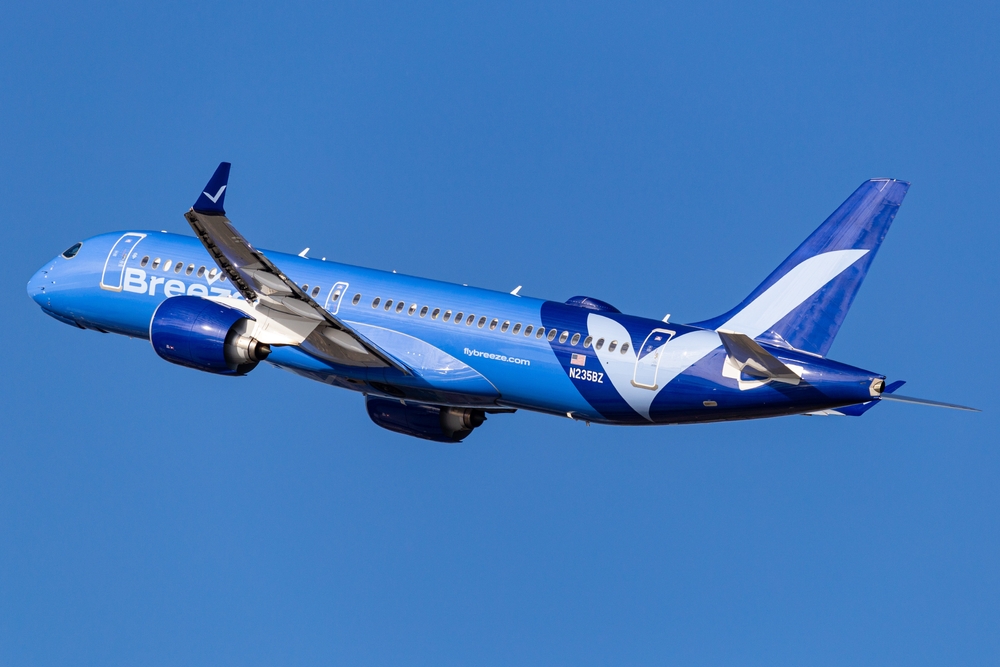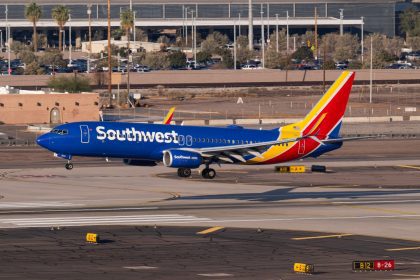Starting an airline during one of the worst possible times in aviation history, when the entire industry was essentially grounded and nobody knew when people would feel comfortable flying again. Now imagine that same airline growing from humble beginnings into a transcontinental powerhouse that’s giving major carriers serious competition in just four short years. That’s exactly the incredible story that’s been unfolding right under our noses.
Sometimes the most inspiring business stories happen when everything seems stacked against success. This particular tale involves taking massive risks during a global pandemic, betting on underserved markets that bigger airlines ignored, and building something completely different from what already existed in American aviation. The results have been nothing short of spectacular.
The audacious pandemic launch that defied all logic
Starting an airline in May 2021 required either incredible courage or complete insanity, depending on your perspective. While the rest of the aviation industry was still figuring out how to survive the pandemic, Breeze Airways took to the skies with their very first flight on May 27, 2021, using an Embraer E195 to connect Tampa International Airport and Charleston International Airport.
That inaugural journey covered just 322 nautical miles and took 85 minutes, representing the modest beginnings of what would become an aviation success story that few people saw coming. The flight itself might have been unremarkable, but the timing and ambition behind it were absolutely revolutionary.
Within those first few weeks, the airline began adding more routes and aircraft to their operation. By the end of May 2021, they had acquired two Embraer E190 aircraft and three E195s, all purchased from the second hand market because startup budgets don’t allow for brand new planes straight from the manufacturer.
The unconventional schedule that made perfect sense
Here’s where things get really interesting from a business strategy perspective. During June 2021, Breeze Airways operated only nine routes originating from either Charleston or Tampa, but they made a fascinating scheduling decision that revealed their deep understanding of travel patterns and operational efficiency.
The airline scheduled 34 weekly flights during the month but had no flights on Tuesdays and Wednesdays. This wasn’t an oversight or a limitation; it was a deliberate choice that reflected their focus on leisure travel rather than business passengers who need to fly every day of the week.
This scheduling approach allowed them to maximize aircraft utilization during peak travel days while minimizing operational costs during slower periods. Instead of trying to compete with major airlines across all market segments, they carved out their own niche and optimized everything around serving that specific customer base.
The aircraft upgrade that changed everything completely
By December 2021, Breeze Airways made a strategic decision that would transform their entire operation. They took delivery of their first Airbus A220-300, registered as N203BZ, which represented a massive leap forward in their capabilities and ambitions.
The A220-300 entered service in May 2022, and its impact was immediate and dramatic. This single aircraft allowed them to expand their reach far beyond anything possible with their smaller Embraer fleet, opening up transcontinental possibilities that had been completely out of reach during their first year of operation.
When that A220-300 took off from Richmond International Airport bound for San Francisco International Airport, it instantly became Breeze Airways’ longest route at 2,128 nautical miles. This wasn’t just a longer flight; it was a completely different category of service that put them in direct competition with major carriers on high value transcontinental routes.
The explosive growth that nobody anticipated
The numbers tell an incredible story of rapid expansion that most industry experts probably thought was impossible for such a new airline. By June 2022, Breeze Airways had grown from 35 weekly departures to 200, representing a massive scaling of operations in just one year.
During 2023, they added nine more A220-300 aircraft to their fleet, and by June 2023, their weekly departure count had exploded to 682 flights, up from 392 in June 2022. That represents a 135.2-percent year-over-year increase that would be impressive for any airline, let alone a startup that was barely two years old.
The increase in total weekly seats was even more dramatic at 152.5 percent, showing that they weren’t just adding more flights but also deploying larger aircraft on routes that could support higher capacity.
The record-breaking route that proves their strategy works
In May 2023, Breeze Airways launched what would become their signature route, connecting Rhode Island T.F. Green International Airport near Providence to Los Angeles International Airport. At 2,253 nautical miles, this transcontinental connection became their longest route and remains so today.
This route perfectly embodies everything Breeze Airways represents as an airline. Rhode Island T.F. Green is exactly the kind of underserved secondary airport that major carriers often ignore, despite serving a significant population that wants convenient flight options without having to drive to Boston or New York.
The transformation of Rhode Island’s connectivity tells the whole story of what happens when Breeze Airways enters a market. In June 2019, the airport had exactly one direct route. By June 2023, Breeze had added multiple destinations and even offered one stop connections to places like Orange County through strategic partnerships.
The underserved market strategy that beats everyone
Here’s the secret sauce that makes Breeze Airways so successful: approximately 86 percent of their routes have no direct competition from other airlines. While major carriers fight over the same lucrative city pairs that everyone else serves, Breeze identifies markets where people want to fly but currently have no good options.
This approach allows them to avoid fare wars with established airlines while serving genuine demand that has been ignored by the industry. Instead of trying to steal passengers from existing routes, they’re creating entirely new travel patterns and making previously difficult trips convenient and affordable.
The California expansion that shows their ambition
By June 2025, Breeze Airways has added even more long-distance routes, particularly to and from California destinations that leisure travelers love. San Diego International Airport now serves as a hub for flights to Cincinnati, Jacksonville, Norfolk, Raleigh Durham, and Pittsburgh, representing exactly the kind of secondary city connections that make perfect sense for their business model.
These aren’t the routes that major airlines prioritize because they don’t fit neatly into hub and spoke systems designed around connecting passengers through major cities. But for Breeze Airways, they represent untapped demand from people who want direct flights between places they actually live and places they actually want to visit.
The Orange County market has become so successful that the airline’s leadership has publicly expressed interest in expanding their presence there, requesting additional slots that would allow them to grow from three to potentially twenty flights at John Wayne Airport.
International expansion that could change everything again
The most exciting development for Breeze Airways might be their recently approved authorization to operate international flights to countries with Open Skies agreements with the United States. This approval, granted in June and valid until 2027, opens up entirely new growth possibilities.
Given their leisure focus and expertise in serving underserved markets, international expansion into Caribbean and Gulf destinations seems like a natural progression. These are exactly the kinds of vacation destinations that their core customer base wants to reach without the hassle of connecting through major hubs.
The future that nobody saw coming
What started as a pandemic era startup with a single 322-mile route has evolved into a transcontinental airline that’s rewriting the rules about how to compete in American aviation. Their success proves that understanding customer needs and serving underserved markets can be more powerful than simply trying to out muscle established competitors.
The Breeze Airways story demonstrates that even in a mature industry dominated by massive airlines, there’s still room for innovation and growth when you’re willing to think differently about what passengers actually want. Their focus on connecting secondary cities with direct flights has created value for travelers while building a sustainable business model that doesn’t depend on competing directly with industry giants.
As they prepare for international expansion and continue growing their domestic network, Breeze Airways represents proof that smart strategy, customer focus, and operational excellence can overcome almost any obstacle, even launching an airline during a global pandemic when everyone thought the industry might never recover.














